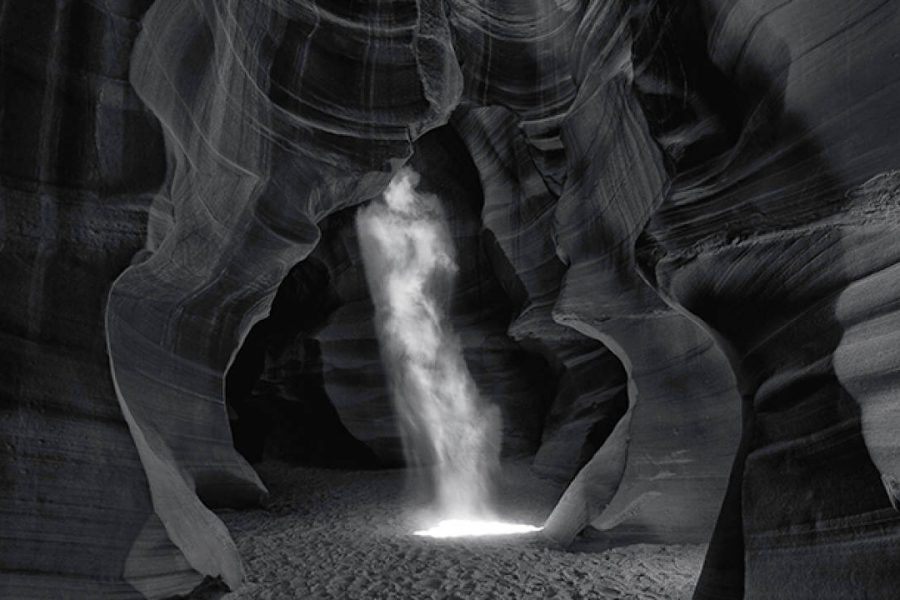The world is full of unnatural things that humans have created for better or worse reasons. We make plastic; we make Pepsi; we make poisons. Some of the unnatural things we create make the world a better place, like medicine. Others, like conventional chemical or nuclear weapons, are destructive. But for better or worse, there are a number of things that do seem like they were created by humans, but which actually occur in nature without our help at all, even if it is quite rare.
10. The drug GHB is produced in your brain

GHB, or gamma hydroxybutyrate, has been a well-known party drug for several years now. It produces feelings of euphoria and a general sense of well-being, at least when dosed carefully. It is also used to treat conditions such as narcolepsy and even alcoholism . However, one of the biggest dangers of GHB is that it can also cause extreme drowsiness, memory loss, loss of consciousness, and problems with muscle control. For these reasons, it has also been infamously used as date rape drug .
Despite all the effects and dangers associated with GHB, it can also be deadly in high enough doses, it's not just some mad scientist's lab creation. Your body naturally produces GHB in small quantities. He is produced in your brain by synthesizing the neurotransmitter GABA. You can find it in your hypothalamus, thalamus, and other parts of your brain, where it still acts as a depressant, just a natural one.
9. MSG is found naturally in many foods.

For years, no food additive has attracted more condemnation than MSG. Most often associated with Chinese food, there has been a long-running campaign against flavor enhancers as dangerous processed additives that can cause terrible health problems, including headaches and cancer.
No no factual evidence that MSG causes any serious health problems. Much of the backlash against MSG may have actually been based on nothing more than racism, especially since there was even something called " Chinese restaurant syndrome ", which allegedly caused problems in people after eating foods prepared with MSG in Asian restaurants.
Many people who lament the effects of MSG probably never realized that despite its chemical-sounding name, it is actually a natural product. MSG contains in many foods, from cheese to tomatoes. It was originally derived from seaweed.
The FDA lists MSG as generally safe for food consumption and notes that even people who consider themselves sensitive to MSG In clinical trials, there is no difference between those who consume MSG and those who take a placebo.
8. Carbonated water is found in some springs

SodaStream came onto the scene a few years ago, giving people the ability to make carbonated drinks right at home using just a bottle of water and any flavoring they wanted. They also tried to promote the idea that their product was healthy because it could give you a simple calorie-free sparkling water just as easy, no sugar or chemical flavorings.
The average American drinks just under 43 gallons of soda a year, so there's clearly a love for carbonated drinks And while Coca-Cola and Pepsi are killing what they sell, sparkling water is by no means a product that was simply invented to make drinks more innovative. In nature This is happening of course.
Carbonated water is what you get when you manage to combine CO2 and water. In the wild, when volcanic gases naturally dissolved in water, they create the same fizz as if you were forcing these gases into water with a SodaStream. The main difference is that a naturally carbonated spring will likely also be very rich in minerals.
7. Nuclear fission reactors can occur in nature.

Of all the things humans have done in the world, it seems like splitting an atom and creating a nuclear reactor should be one of the most unnatural, and yet here we are. Make no mistake, it is incredibly rare and vastly different from what humans can do with a controlled reaction in a planned nuclear power plant. However, if you look at the nuts and bolts, a nuclear fission reaction can occur in the wild similar to what happens in a reactor.
Gabon, Africa, is known for about two billion years ago were located here natural nuclear reactors . There were 17 of them in Gabon, and their power was very small compared to a modern reactor, about 100 kilowatts The conditions that allowed the reaction to occur were incredibly rare and precise, requiring the right type of uranium to ensure spontaneous fission, plus precise conditions to contain but not interfere with such a reaction, and a moderator to slow down the neutrons. Despite the odds that all these conditions would be met, in Gabon everything was in the right place at the right time. The reactors probably operated for a million years, and the waste was safely stored underground.
6. Asphalt is formed naturally in bitumen quarries.

Do you spend a lot of time thinking about paving? Annually In the USA about 350 million metric tons asphalt. With more than 2.6 million miles of America's roads paved, there's a huge demand for the stuff. And, as luck would have it, it doesn't have to be manufactured in a factory. Asphalt is produced naturally, and humans have been using it since ancient times. Mesopotamia and Egypt .
Places like Pitch Lake in Trinidad are natural lakes full of asphalt and tar. Since 1867, the lake has been mined ten million tons material. Asphalt is used for paving around the world, but production has declined significantly. This is partly because asphalt is the most recycled product in America. In 2013 alone, nearly 70 million tons were disposed of, and almost all of it was recycled and reused.
5. Antimatter is produced in bananas

Few things sound more like science fiction than the concept of antimatter. It's matter, but somehow backwards, and if matter and antimatter collide, they'll both collapse. Yes, the science is a lot more complicated than that, but it's crazy anyway. And what's even crazier is that antimatter is on Earth right this second, and you might even eat it sometimes because it's made out of bananas.
Bananas are known to be a good source of potassium , but not all potassium is created equal. Potassium-40, an unstable isotope, slowly degrades over time, and part of that degradation involves the release of antimatter in the form of positrons. A single banana releases a positron approximately every 75 minutes .
The emitted positrons are likely to be destroyed almost instantly when they collide with a random electron, but there is a chance that they also emit photos, so tiny, technically visible explosions of antimatter may be happening all the time around your banana plate. The numbers are extremely low, in case you are worried, and do not pose a threat.
4. Electromagnetic fields arise in oil pipelines.

We know that the Earth has a magnetic field, as do magnets. So the idea of a natural magnetic field is not in itself unusual or unexpected. However, the natural electromagnetic field and the electric currents that form in oil pipelines, sound unusual. However, it is a natural phenomenon and sometimes an unintended consequence of the way oil pipelines are built and installed.
Several companies are now offering solutions for demagnetization of the pipeline , as this problem can make welding virtually impossible. But already constructed pipelines also have the problem of magnetization and current leakage due to conditions such as auroral electrojet in the ionosphere, a current that flows over the north polar region. There is also an electrojet at the South Pole and around the equator. During periods of moderate electromagnetic activity, a current of 50 amperes has been measured in the Alaska pipeline.
3. Eternal flames occur naturally all over the world.

The concept of a universal flame is actually very common. They exist in countries all over the world, usually built and lit as a tribute or memorial to something. In CanadaFlame of Hope was lit in 1989 by Queen Elizabeth with the intention of keeping it burning until diabetes was cured. In 1993, Bill Clinton lit one in US Holocaust Museum There is one in Belarus that was lit back in 1961 .
While many of these lights actually went out accidentally or, in some cases, were deliberately extinguished, they were all meant to continue burning as long as someone paid the gas bill. But nature has its own set of eternal lights around the world that are created by deposits natural gas .
Erie County, New York has a famous eternal flame in Eternal Flame Waterfall . To be honest, the flame sometimes goes out because it is right under the waterfall and people need to relight it from time to time. This is also a bit of a mystery , how this eternal flame exists at all, since the rock in the area is not hot enough to create the necessary conditions, at least as far as we understand how these things work, meaning that something else produced the flames, a gas deposit somehow.
2. Mechanical transmissions exist in insects

The mechanism appears to be a simple and completely fabricated thing. We can trace the gears back to third century in Europe and even earlier in China , and innovation has allowed for some amazing inventions to be made to this day, including clocks, mills, and much more complex machines.
Remarkable, yet seemingly simple, like a machine, it seems entirely manufactured. You have to cut the pieces to fit together in a way that allows movement and functionality. It was surprising to learn that nature had created its own machines, something scientists reported in 2013 .
The tiny insect called Issus coleoptratus is only three millimetres long and moves by jumping. However, the mechanism that allows them to jump is not the same as that of a grasshopper. Instead, the hind legs of this remarkable creature have naturally formed mechanical gears , which allow the legs to lock and rotate as one unit, then propel the little creature forward.
To succeed at jumping, the action must be precisely coordinated between both legs. The insect is able to launch both legs within 30 microseconds, or 30 millionths of a second. The beetle’s brain isn’t even developed enough to do this, so instead, its skeleton does it automatically, providing the mechanisms to make everything happen as it should.
1. Benzo/Valium occurs naturally in many major crops.

Benzodiazepines, sometimes called benzos, are depressants used as sedatives. They can be used as a sleep aid or sedative, and are sometimes also prescribed for anxiety disorders. These drugs enjoyed enormous popularity, and by 1977 benzodiazepines were the most frequently prescribed medications in the world. People have used them to treat alcohol withdrawal, as surgical preparation, and for muscle spasms.
The drugs were gradually replaced by more modern drugs that were considered less harmful, at least at the time. It’s not that benzos don’t exist anymore, they’re just much less popular. But you can also get a natural fix of the drug, and research shows that mammalian brain contains natural amounts of drugs.
It turns out that potatoes and wheat produce substances that are very similar chemically to benzo, as well as other substances such as diazepam , better known as Valium, and lorazepam, better known as Ativan.













Оставить Комментарий